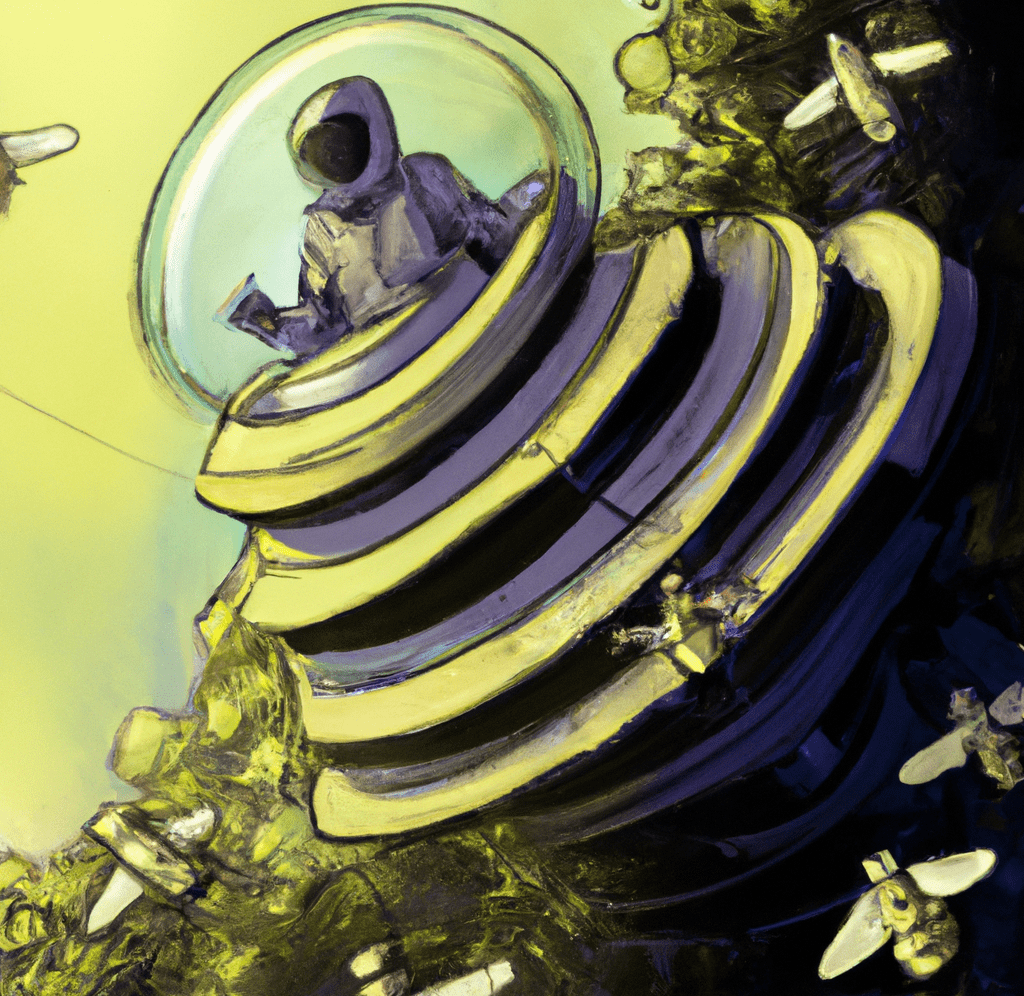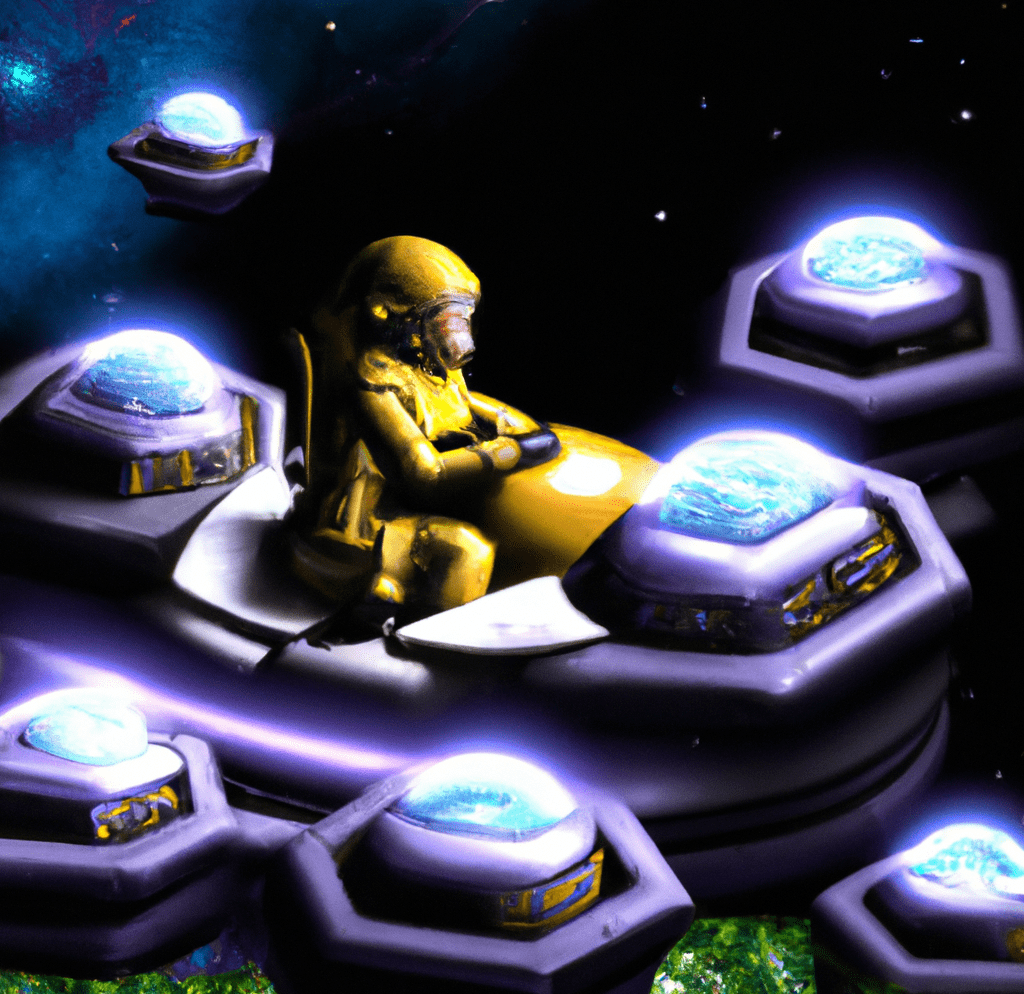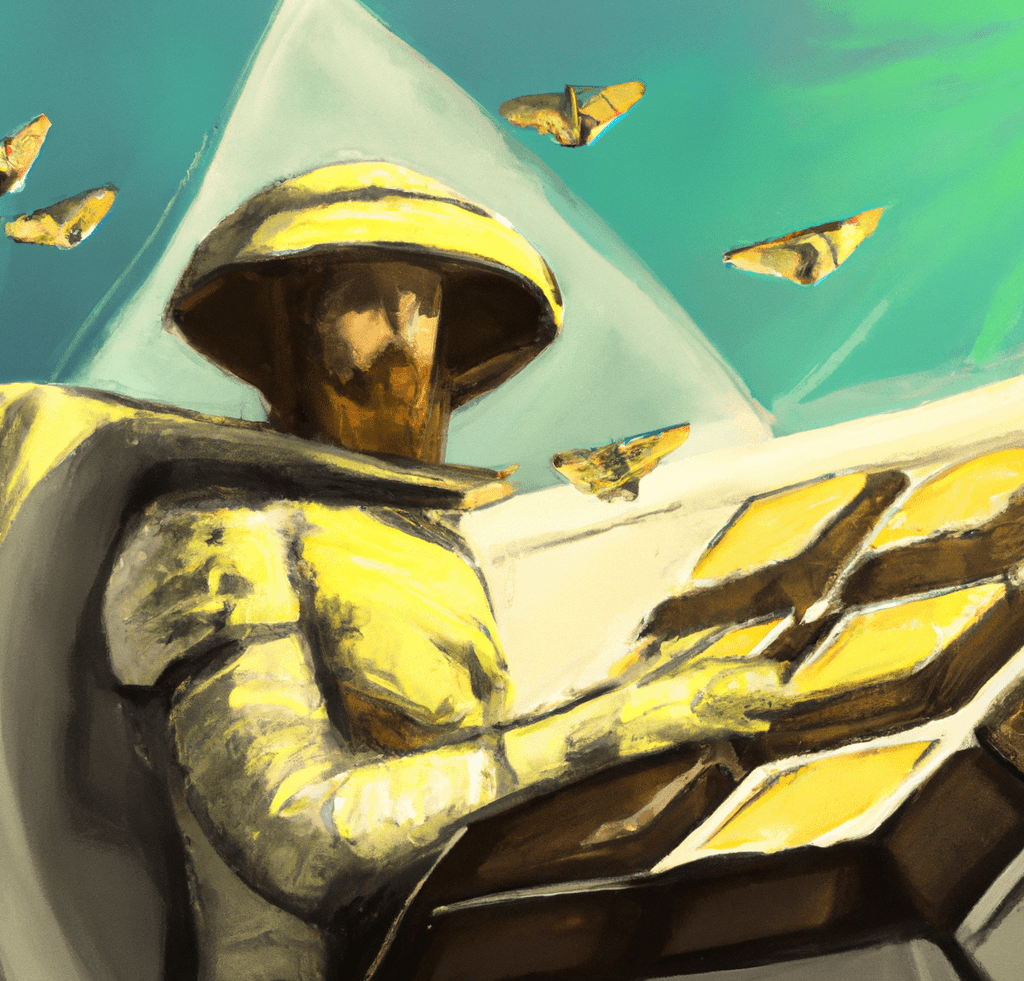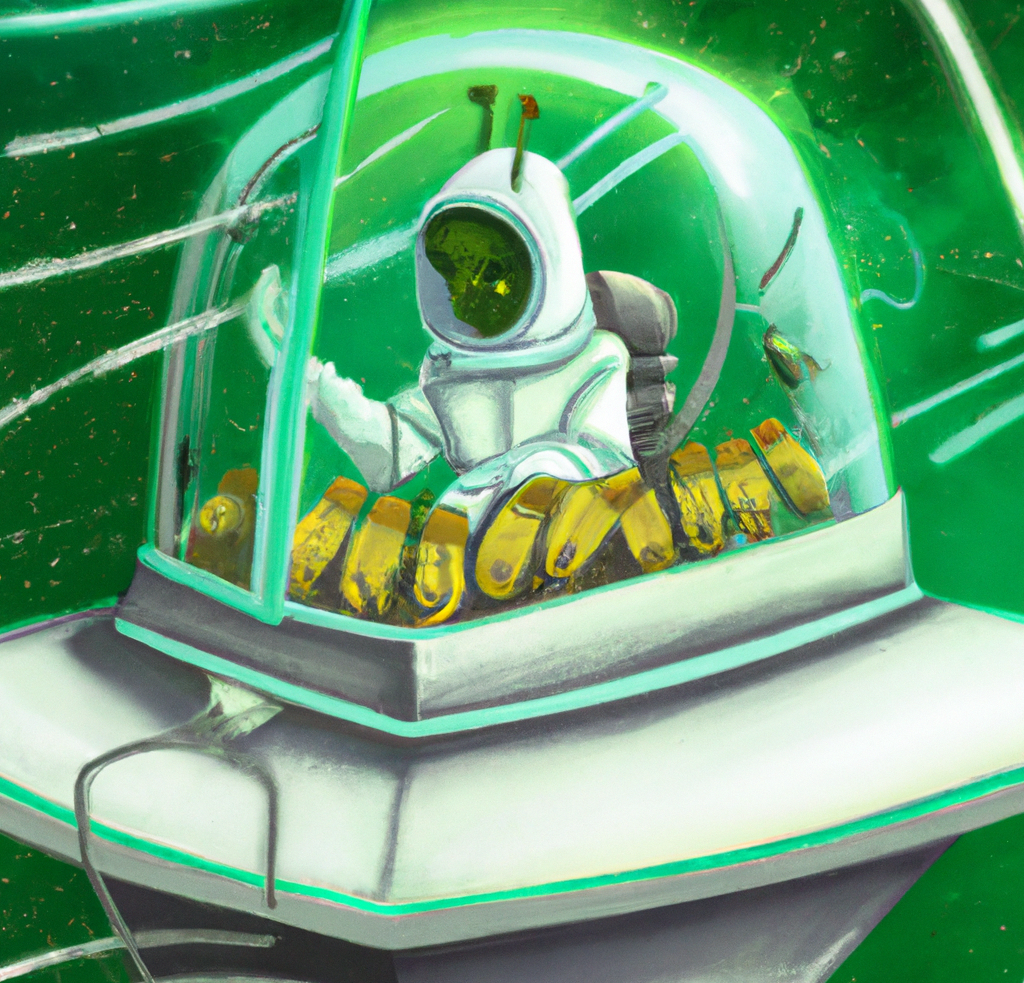Chapter 1: A Sticky Situation
In the vast expanse of the cosmos, where no bee has boldly buzzed before, an interstellar endeavor is taking flight – Beekeeping in Space. As Earthlings look to the stars for the next great adventure, it seems they’ve set their sights on an unlikely space-faring companion: bees.

Chapter 2: The Buzz Heard ‘Round the Galaxy
The cosmic apiary initiative aims to study the effects of micro-gravity on bee behavior and honey production. However, this mission is not without its challenges. The first hurdle? Teaching bees to buzz in zero gravity. Imagine a bee attempting to perform its elegant waggle dance in a weightless environment. It’s like a celestial ballet with a comical twist.
Chapter 3: Pollination Problems
One of the critical roles bees play on Earth is pollination. In space, however, the absence of a traditional ecosystem poses a dilemma. How will these space bees pollinate their cosmic flora? Engineers are scratching their heads, contemplating tiny spacesuit-clad bees equipped with miniature pollen collectors. Perhaps a miniature bee-sized spaceship filled with pollen could be the solution. After all, a space bee needs its space pollen.

Chapter 4: The Interstellar Nectar of the Gods
Honey production in space raises another issue. Honey is notorious for its sticky nature on Earth; now imagine dealing with it in micro-gravity. Astronauts might find themselves in a sticky situation, quite literally. Picture floating globules of honey drifting through the spaceship like edible space debris. The cleanup crew, armed with space mops and mini-vacuums, will have their work cut out for them.
Chapter 5: Space Bees vs. Space Suits
The logistics of suiting up bees for space exploration is another conundrum. Crafty spacesuits must be designed to protect the buzzing astronauts from the harsh conditions beyond our atmosphere. Special helmets with tiny antennae slots and spacesuit wings for aero-dynamic buzzing are under consideration. Some experts even propose a line of stylish spacesuits, complete with bee-sized sunglasses to protect their eyes from the dazzling sunbeams.

Chapter 6: The Zero-G Honeycomb Conundrum
Back on Earth, bees create their honeycombs with gravity as their guide. In space, constructing symmetrical hexagons might be a challenge. Bees, accustomed to building downwards, may find themselves utterly confused in an environment where up and down have lost their meaning. The result? A twisted, skewed honeycomb that would make any geometry teacher cringe.
Chapter 7: The Cosmic Sting Operation
Now, the most crucial concern: what happens if a bee decides to exercise its stinging capabilities in space? A bee sting on Earth is unpleasant but manageable. However, a bee sting in micro-gravity could propel the hapless astronaut into a spin, causing a cosmic dance of disorientation. Astronauts may need anti-sting space suits or, in a worst-case scenario, a designated bee whisperer to calm agitated space bees.

Chapter 8: Buzzing Back to Earth
Despite these hypothetical challenges, the idea of beekeeping in space is an intriguing venture that captures the imagination. The prospect of celestial honey and intergalactic pollination may be worth the inevitable cosmic comedy that would ensue. As we look toward the future of space exploration, let’s not forget the tiny heroes who may one day boldly go where no bee has gone before – beyond the buzz and into the cosmos.


